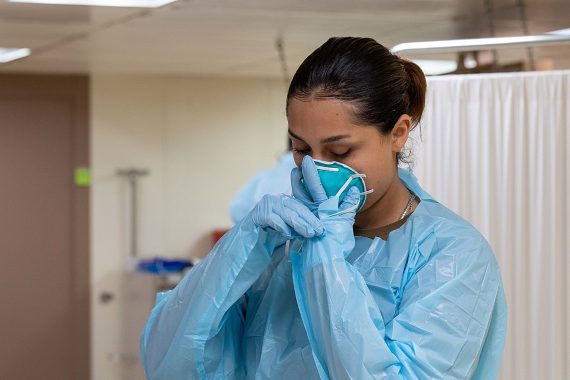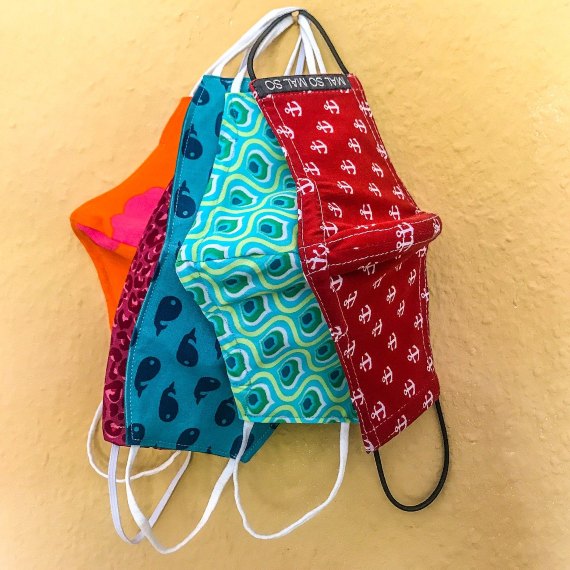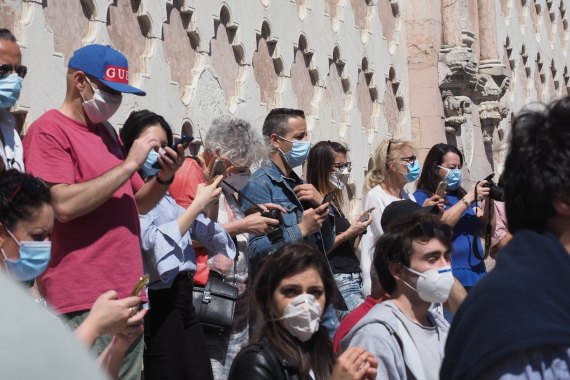A year ago, we could scarcely have imagined that an object previously foreign to most people would become an integral part of our daily lives. The COVID-19 pandemic has spread the use of face masks as an obligation or recommendation in a large number of countries, with unequal levels of compliance: while in Sweden only 29% of the population say they use them, in Malaysia the percentage rises to 90%, and to 88% in Spain. According to the United Nations, the global demand for surgical masks alone is expected to reach about 2.4 billion in 2020, and is expected to rise significantly. However, there are still some who doubt their benefits, while others are confused by conflicting messages about which type of mask is the right one to strap on.
We now know that the use of face masks is a key measure in controlling the pandemic and should have been introduced much earlier. The relative paucity of studies prior to the emergence of the SARS-CoV-2 coronavirus, together with the uncertainties regarding asymptomatic or pre-symptomatic transmission and aerosol transmission, meant that the recommendation was initially limited to containing the larger droplets expelled by symptomatic individuals, which can travel up to three metres with coughing. The current scientific consensus emphasises the enormous importance of aerosol transmission, smaller particles that remain suspended in the air, and that the mask is not only useful to protect others, but also the wearer himself.
Surgical or FFP2?
However, the avalanche of studies on the different types of face masks yields a variety of conclusions that can be confusing: medical or fabric mask? Of the former, surgical or FFP2/N95? Not all serve the same purpose: FFP2 in Europe (Filtering Face Piece 2) or N95 in the US are Personal Protective Equipment (PPE) designed to protect the wearer by blocking at least 94% or 95%, respectively, of particles larger than 0.3 microns; the virus measures around 0.1 micron, but travels through the air in larger droplets, mostly between 1 and 10 microns. It should be stressed that masks with exhalation valves should be avoided, as they expel unfiltered air.

Surgical masks were known to be effective in safeguarding others from the mask wearer, their original purpose, but studies show that they also offer protection to the wearer and that their aerosol filtering capacity can be as high as 90% under the best of circumstances. Finally, the use of reusable fabric masks, which must have a minimum of two or three layers, possibly of different fabrics and especially with interposed filters, has become widespread. There is great variability in fabric masks, but the best ones can block aerosols to a level comparable or even superior to that of surgical masks, as indicated by experimental studies.
But despite the abundant evidence in favour of the functionality of face masks, their effectiveness must also be demonstrated in real-world conditions. In June 2020, The Lancet published a large review of 172 observational studies in 16 countries, conducted by McMaster University (Canada) under the auspices of the World Health Organisation (WHO). The results were compelling: the use of face masks in the general population reduces the risk of infection from 17.4% to 3.1%, a reduction of 82%. The study found that “both N95 and surgical masks had a stronger association with protection versus single-layer masks.”
Cloth masks for the under-60 population
Recently, some European countries such as Germany, France and Austria have banned cloth face masks in certain public spaces, making the use of medical masks mandatory. However, not all experts agree that PPE should be recommended to the general public, taking these resources away from healthcare workers in need of greater protection. “I would be hesitant to recommend the public wear surgical masks when we have very good alternatives, and many health care facilities and nursing homes are experiencing or constantly under threat of PPE shortages,” University of Colorado physician Cleveland Piggott, editor of a recent review that emphasises the superior protection of medical masks over cloth masks for healthcare professionals, tells OpenMind

Notably, the WHO continues to recommend cloth masks for the under-60 population without relevant pathologies. University of New South Wales (Australia) infectious disease specialist Raina MacIntyre, who pioneered studies of the usefulness of face masks prior to this pandemic, tells OpenMind that “certainly an FFP2 will protect better than a cloth or surgical mask,” but adds that “it is possible to design a good cloth mask, and not all cloth masks are equal.” However, she warns that new, more contagious variants of the virus that have emerged in the UK, Brazil or South Africa “will require higher levels of protection.”
Above all, the experts insist that not everything depends on a high level of fabric filtration, but that the fit of the mask to the face is also key. “If the filter is of poor quality or the air passes through the gaps between the face and the mask, rather than through the fabric of the mask, the effectiveness is low,” University of Colorado aerosol expert José Luis Jiménez tells OpenMind. “The fit of most people’s mask is terrible. Many wear an FFP2 and it hangs down, with tremendous gaps on the sides of the nose.”
A good seal
Jimenez explains that getting a good seal is difficult when “FFP2s have a design problem: the fabric is chosen to filter very well, and then you ask that same material to seal well, and that is very difficult.” Designs, he says, need to evolve to improve the fit. “There is a big innovation, elastomeric respirators, in which you use the FFP2 material to filter, but you use silicone or similar materials to seal. With this type of mask I think the general population could protect themselves much, much better.” Without explaining this problem, he concludes, recommending FFP2 for the whole population is not a good solution, given that a better fitting fabric mask “may work better,” provided it is “two or three layers with filter, with good quality fabric, with a metal fitting to close gaps on the sides of the nose, tested by laboratories with aerosol equipment.”
“Fit is something of an issue,” but it is not the only one, Paul Glasziou, an expert in evidence-based medicine at Bond University in Australia, tells OpenMind. Glasziou is co-author of a review of clinical trials that finds smaller than expected benefits from the use of face masks against respiratory viruses such as influenza. The expert stresses that the real effectiveness may be reduced by factors such as poor use, decreased protection over time or lack of eye protection. However, for Jiménez, considering only randomised controlled clinical trials does not adequately reflect reality, as “they are too limited and give rise to many problems.”
A false sense of security
Another objection raised is that the use of face masks could create a false sense of security that leads people to take greater risks. A population-based study by the University of Vermont reveals that “wearing a facemask outside work increased the number of daily contacts,” which “may increase SARS-CoV-2 exposure.” “If the introduction of these masks don’t go hand in hand with public health information and campaigns, it may not have the desired clinical effect that policymakers are hoping for,” public health expert Eline van den Broek-Altenburg, lead author of the study, tells OpenMind.

Information campaigns, the experts conclude, are also vital as a reminder that even the best face mask is not a single measure that guarantees safety: physical distance, air ventilation and filtration, hand hygiene and eye protection are other pillars in the fight against the pandemic. “I’m a big believer in the Swiss-cheese model of public health in which we use multiple interventions that are not 100% perfect so that we can be protected,” Piggott summarises. “Currently, studies are being undertaken looking at wearing two masks and other methods along the line of the Swiss-cheese model to keep people protected.”
Comments on this publication